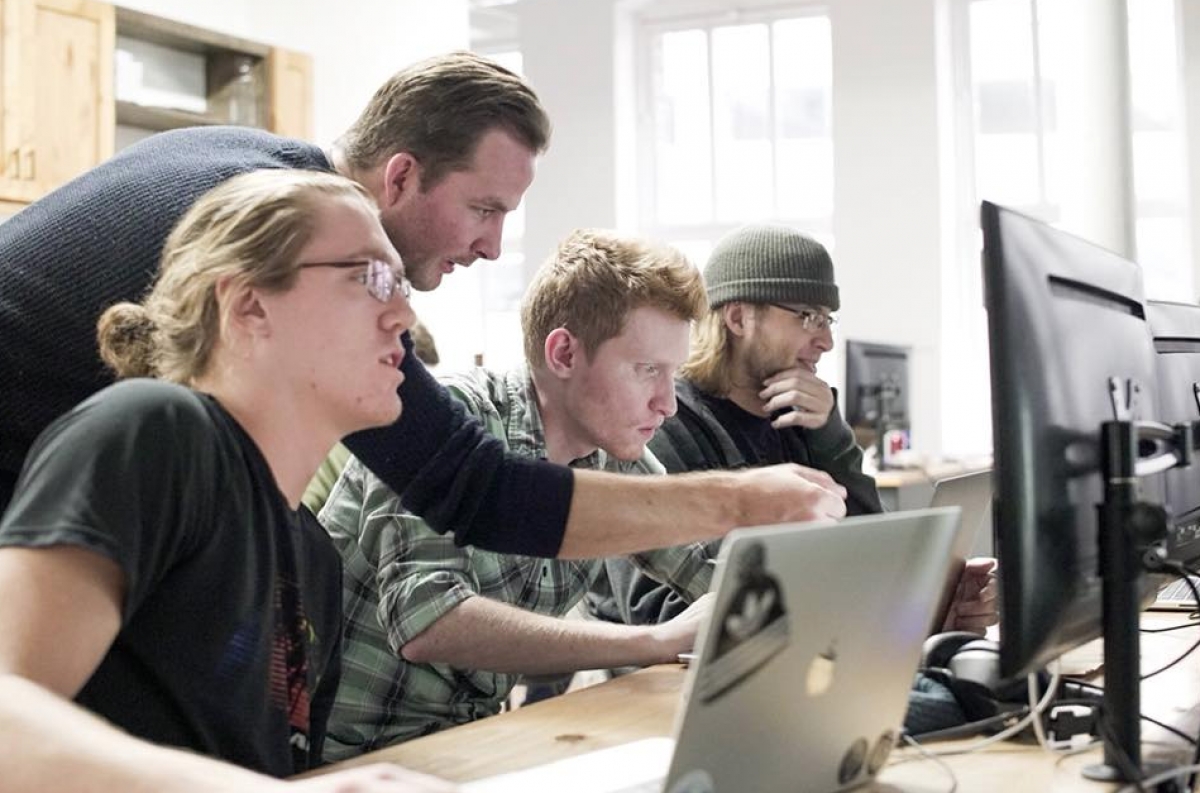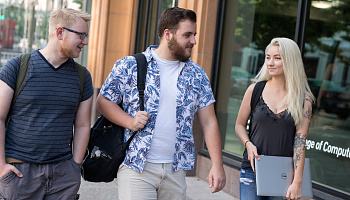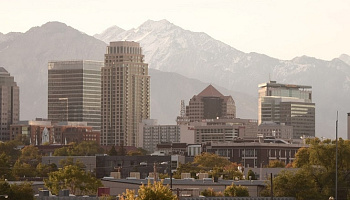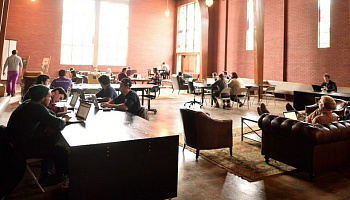If you aren’t familiar with coding bootcamps, they started cropping up five or six years ago in response to a shortage of software developers relative to the fast-growing tech industry. Since then coding schools have taken off as a lower cost and shorter duration alternative to a four-year degree. And the amazing thing is—they work.
I’m currently attending the Web Development Bootcamp at V School in downtown Salt Lake City. It’s a 12-week, skill-based program where students learn how to build websites and applications. They come out full stack developers, which means that they can code the frontend and backend of a website. The frontend is the look, feel and interactivity of the site; whereas the backend is how data is handled, including servers and databases. It’s wild how much ground can be covered in a 12-week bootcamp when spending every day doing hands-on, applied learning. The wildest thing of all, is that students at V School have a 100 percent job placement rate within six months of graduation. On top of that, many are making the same level of pay as Computer Science graduates from four-year institutions.
Odds are, that last part got your attention. When it comes to getting a job in the tech industry, the people who are hiring are more interested in your skillset than a degree. Above all else, they want to know that you can problem solve and code projects. So, when someone applies to a tech company, it’s common for the company to give the applicant a ‘code challenge.’ A code challenge asks you to solve a problem or build an application. Here’s an example from interviewcake.com: “Write an efficient function that takes stock prices yesterday and returns the best profit I could have made from one purchase and one sale of one Apple stock yesterday.”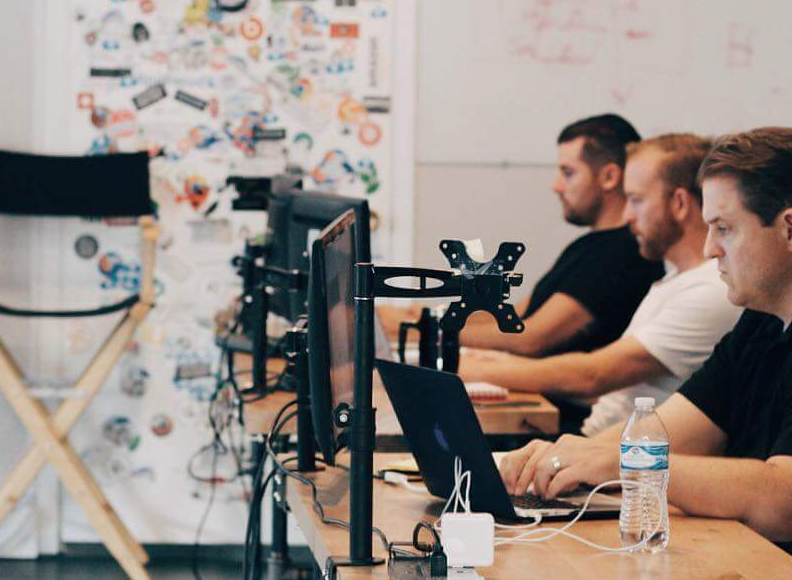
Bottom line, it really is possible to get a software engineering job right out of a bootcamp like this. It’s possible to get one right out of learning in your basement, too—but that’s a lot harder to do. Several V School students spun their wheels trying to learn on their own for years before committing to a bootcamp. The structure of a good bootcamp gets you further and faster with a curriculum that ensures that you know the solid fundamentals needed to write meaningful code that solves problems.
At V School, class runs Monday through Friday from 9 a.m. to 6 p.m. Students can start earlier if they want, working together on problem-solving skills, or even stay late for optional lectures. It’s an immersive environment where you are your only limiting factor. Becoming a software developer in 12 weeks is not a marathon—it’s a sprint. There is no downtime, no filler, no fat. Students should expect to be busy. There is so much to learn every day, and each day builds on the one before. The main difference between learning at a university and learning at a bootcamp comes from learning in an immersive, skill-based environment. There are no long lectures. We don’t write papers. We code. All. Day. Long. At the end of the day, there is no doubt that we are better than we were when the day began.
The early morning instruction and late lectures are available in part because the V School team doesn't have an off switch. The entire staff truly cares about making a difference in students lives. They thrive on seeing students ‘get it.’ It’s been really impressive to find teachers available to answer questions any hour of the day or night, weekday or weekend.
In my class, we have Jacob ‘The’ Evans and Ben Turner teaching. Jacob is eloquent and self-effacing. He has the kind of natural talent for teaching that makes you respect his competence while also being completely entertained. He is at home in front of a class. Ben is the yin to Jacob’s yang. He is soft-spoken and methodical in breaking concepts down. He shines when helping students one on one and has a talent for letting the person he is helping figure out the answer of their question. They both have a true passion and dedication for teaching.
Cohorts at V School are small—there are 12 students in my class. Having a small class size lends itself to quick bonding between students. In my class, we’re constantly joking and razzing each other. It makes it a pleasure to be in class all day, and time passes fast.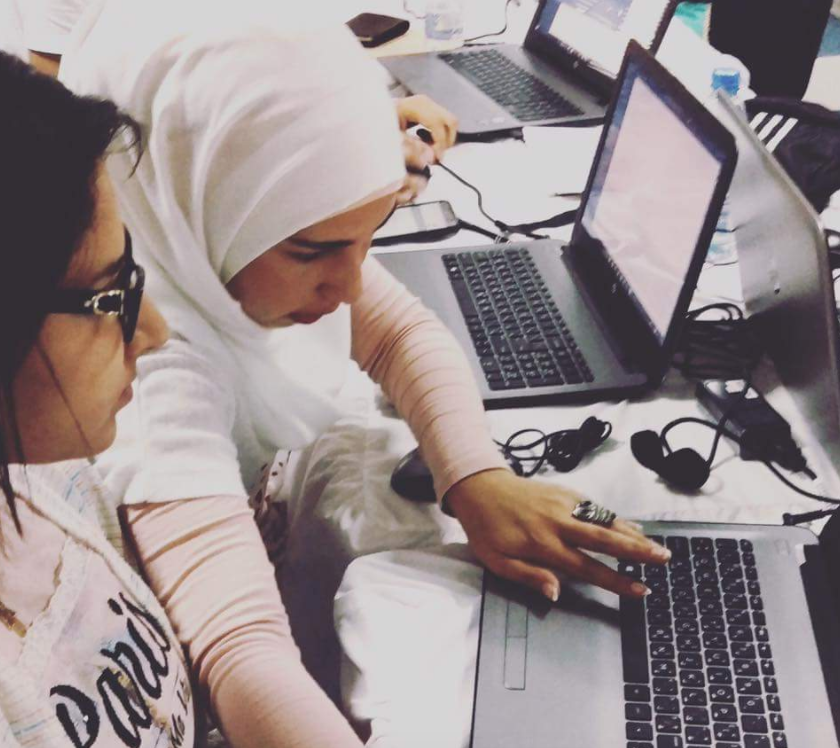
Some students at V School are current college students trying to get ahead; some are recent college graduates who don’t want to work in their majors. Others are looking for new careers, and come from a wide variety of backgrounds. Between cohorts we have a physical therapist, an electrician, a graphic designer, an Uber driver, a social media expert, a musician, a shop owner, and a truck driver—just to name a few. The youngest student is 18. The second week of class, he missed a day and we were all wondering where he was. It turned out he was graduating high school. The oldest student in my class is an entrepreneur around 50 years old who wants to manage his developers better. I could go on, but suffice to say V School is a cross-section of what downtown is: dynamic and diverse. As in anything, the people around you have a huge impact on your experience and having such diverse backgrounds creates an amazingly rich environment. We all have our individual strengths, through which everyone helps each other learn.
We’re all here for the same end goal of career building. This isn’t lost on V School. For an hour once a week, there is a class on career skills. Every week it’s a different topic, covering things like resume writing, creating a LinkedIn profile and interviewing skills. Classes also take trips to Q & A with developers at successful, fast-growing companies. It’s an opportunity to learn more about what development jobs are actually like and what skills are valued. I was impressed that the developers we’ve met let us know that the skills we are learning are in high demand and that there are a ton of jobs available in Salt Lake. From downtown to Silicon Slopes, Utah is booming for tech companies, and a skilled workforce is in demand.
The Impact Hub on State Street, where V School is located, is also filled with Salt Lake tech. It’s a work-sharing space that houses a number of startups and emerging tech companies. It’s packed with interesting people, and also runs many events and mixers. The networking opportunities by having the school there are invaluable. Another perk is the central downtown location, with the vibrancy and high energy a suburban campus lacks. At lunch, we usually wander over to the Gallivan Center to sit under the trees in the grass and eat lunch with live music playing nearby. On Thursdays, food trucks line the streets and there’s a band. When I’m leaving school there are often concerts at the Gallivan, and the shows are free many nights. There are also a lot of great restaurants, theaters, bars, art galleries and City Creek Center nearby.
For me, V School has been a great experience, and I would do it again in a heartbeat. The instructors are excellent, my classmates and I are now friends, and I am learning a phenomenal amount. I love being challenged daily. Whether I feel I do well with the day’s challenge or I don’t, I always come out of the day a stronger coder with new skills. Ok, now back to the coding...

